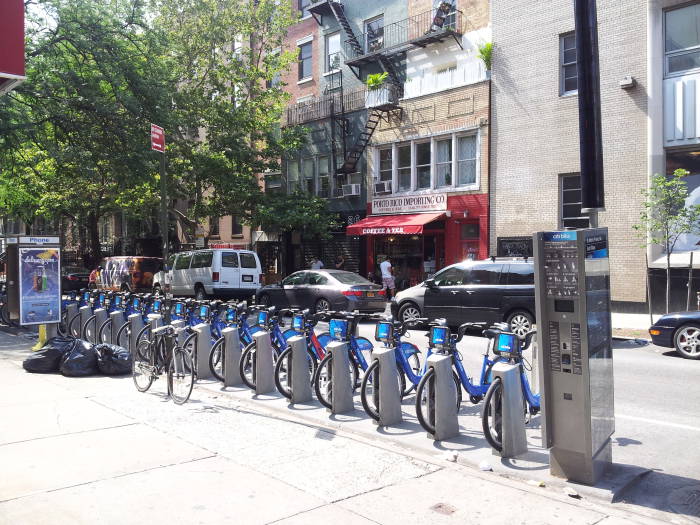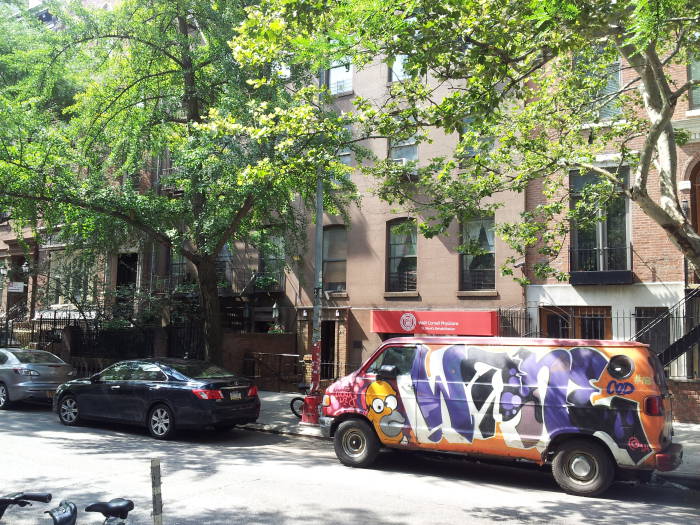
St. Marks Place
South side of St. Marks Place from Second Avenue to First Avenue
We're starting from the northwest corner of the
intersection of St. Marks Place and
Second Avenue,
looking diagonally across the intersection at
the bland modern Chase bank.
Second Avenue begins at the intersection
of 128 Street and Harlem River Drive in the north, and runs
south to Houston Street where its name changes to Chrystie
Street and continues as far as Canal Street.
It is all one-way traffic to the south except for
that first block in Harlem.
A gas explosion and fire destroyed three buildings at
119, 121, and 123 Second Avenue between St Marks Place
and East 7th Street on March 26, 2015.
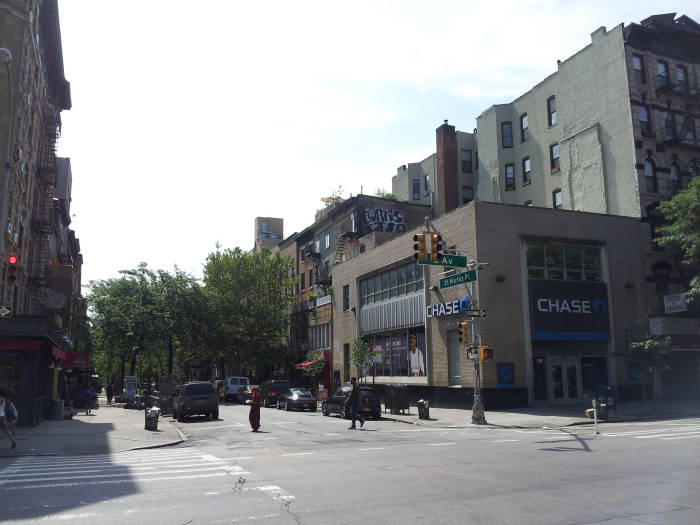
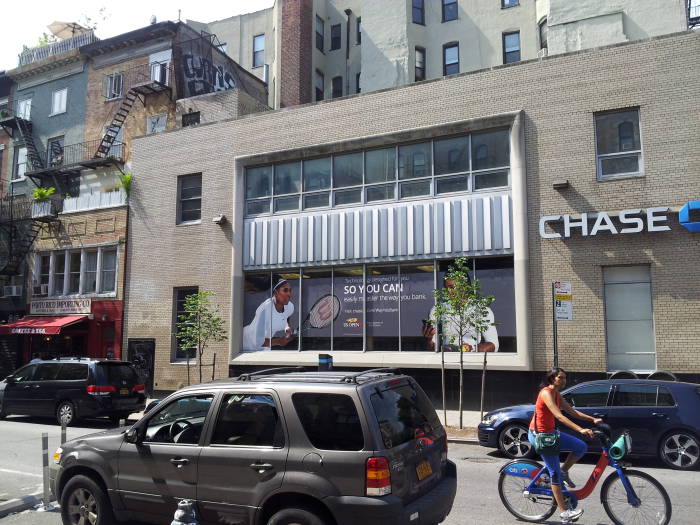
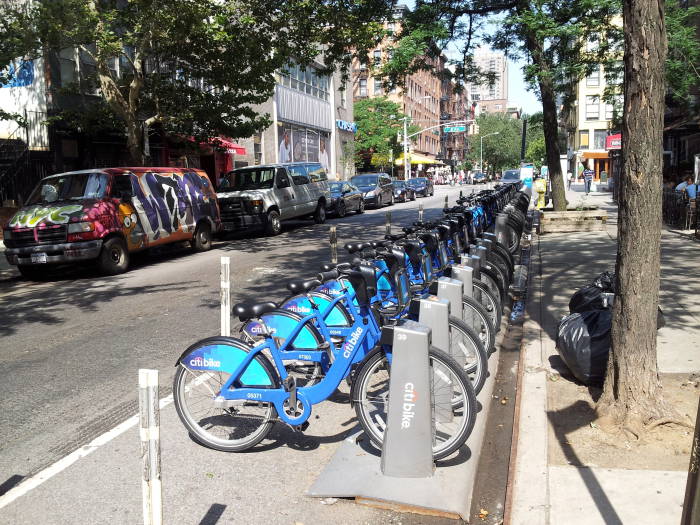
The First German Methodist Episcopal Church was founded when this area was Kleindeutschland from the mid 1800s to 1904. It began as the German Mission and Sunday School in 1841, established in a hired room on the corner of Essex and Stanton Streets on the Lower East Side and incorporated on April 19, 1842, as the first German Methodist church in New York City. In late 1842 a church building was constructed on East 2nd Street. This building at #48 St Marks Place was constructed in 1902.
On June 15, 1904, the SS General Slocum excursion steamer caught fire in the East River. About 1,350 German immigrants aboard, and 1,021 died. Many of the survivors moved away from Kleindeutschland, returning to Germany or establishing a new Germantown on the Upper East Side. Poles and Russians moved in to take their place. Ukrainians are today's dominant nationality in the East Village.
The two World Wars diminished the German-speaking branch of the Methodist Episcopal Church, and this congregation was finally dissolved in 1975. Now it is a United Methodist congregation with a large Korean component, Broken Builders.
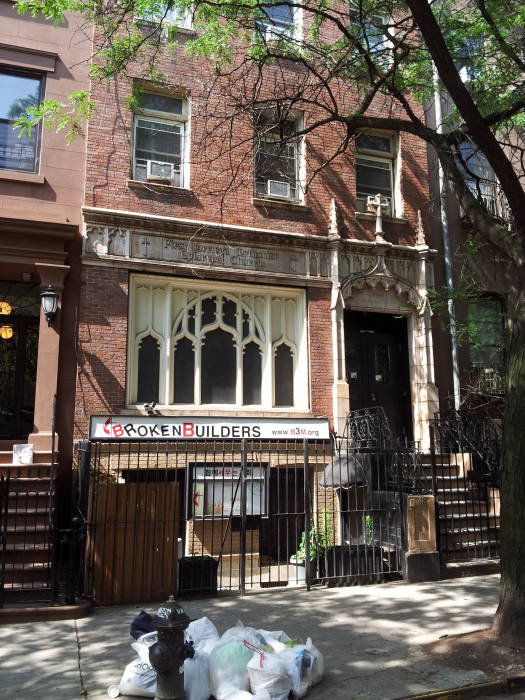
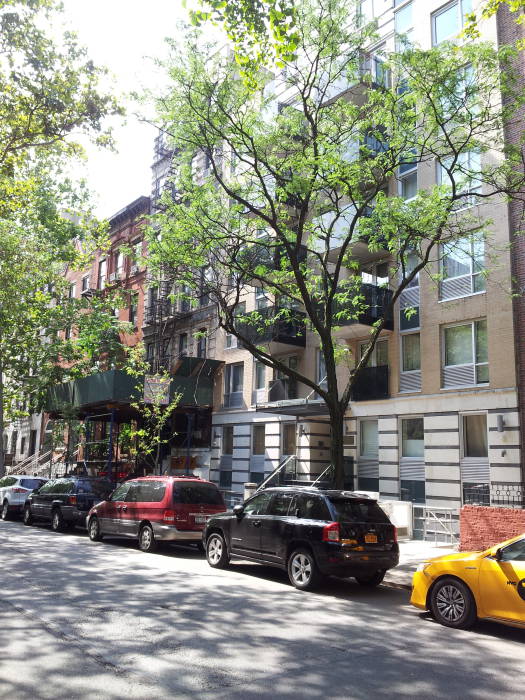
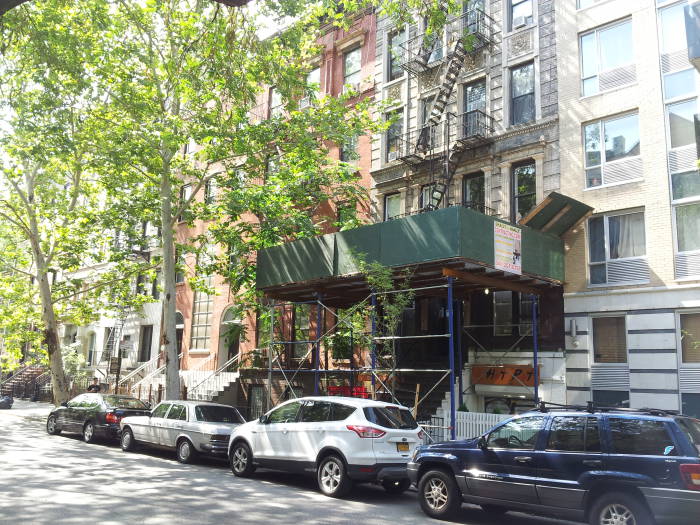
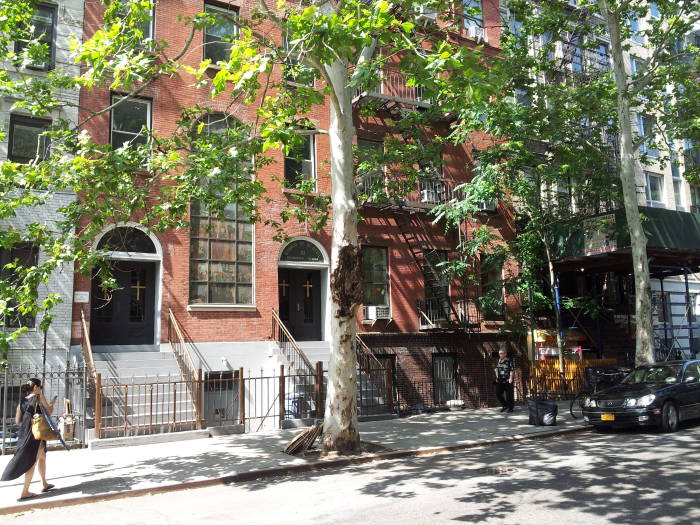
The Church of Saint Cyril at #62 houses the Slovenian Cultural Center.
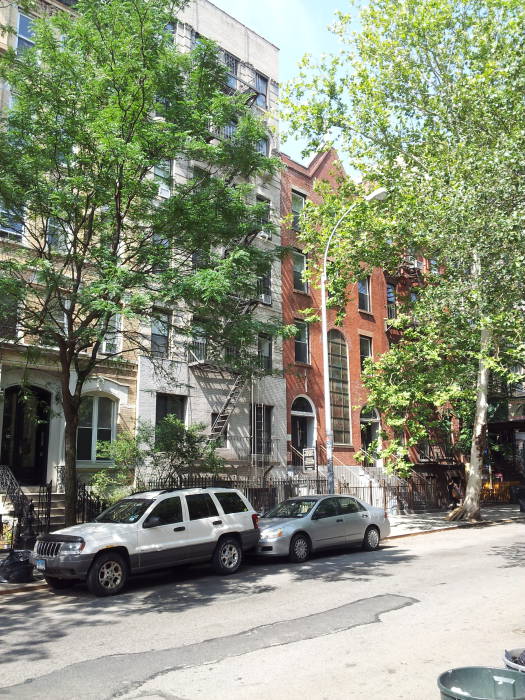
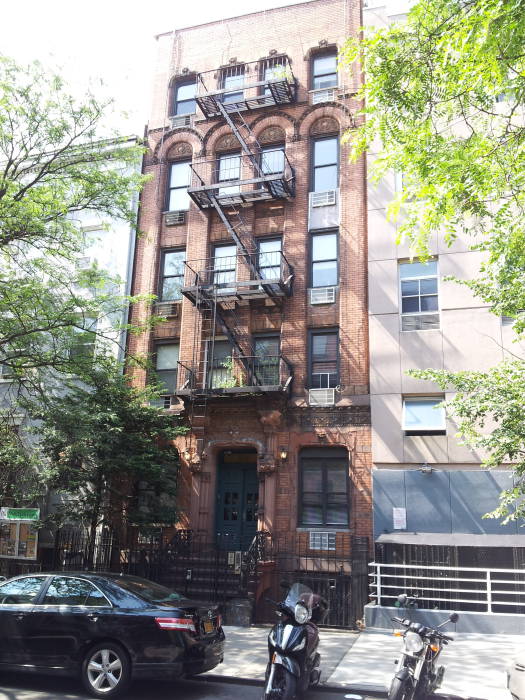
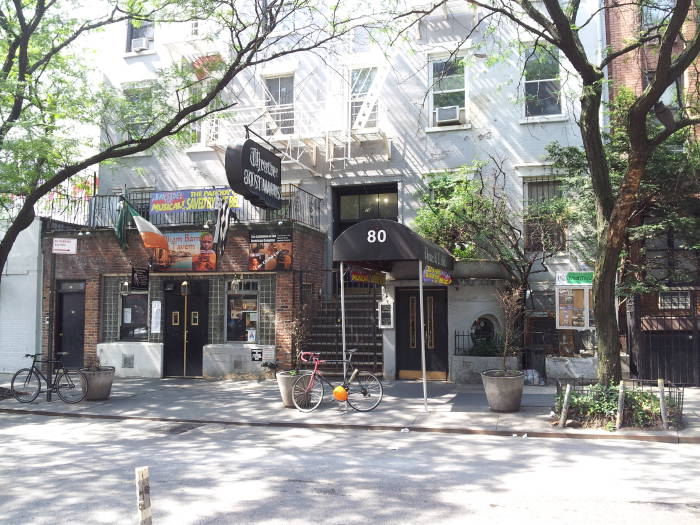
Theater 80 St. Marks is home to a small theater company. The sidewalk has handprints of Joan Crawford, Gloria Swanson, Jane Russell, Dom DeLuise, and others.
Before that it was the Jazz Gallery in the 1960s.
Leon Trotsky is sometimes said to have lived here during the three months in early 1917 while he was working across the street at #77 where the Russian-language Communist news paper Новый Мірь (or New World) was published in 1916 and 1917. However, he is also said to have lived at 1522 Vyse Avenue in the Bronx.
The neighboring bar William Barnacle plays up its past as a speakeasy. It serves Breton-style crepes in the evening.
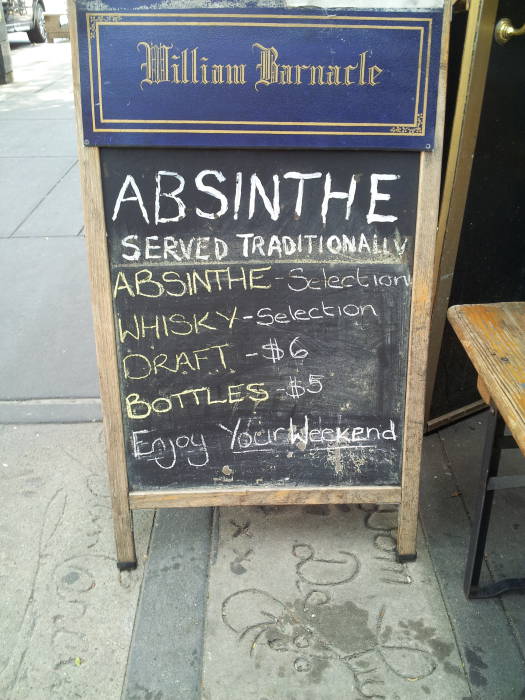
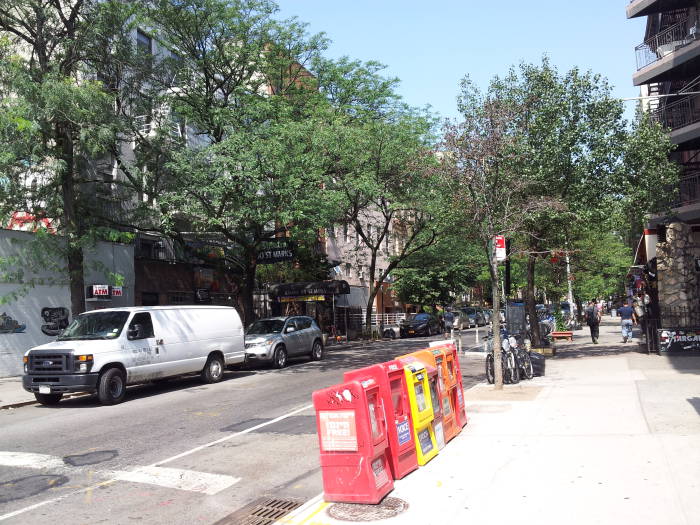
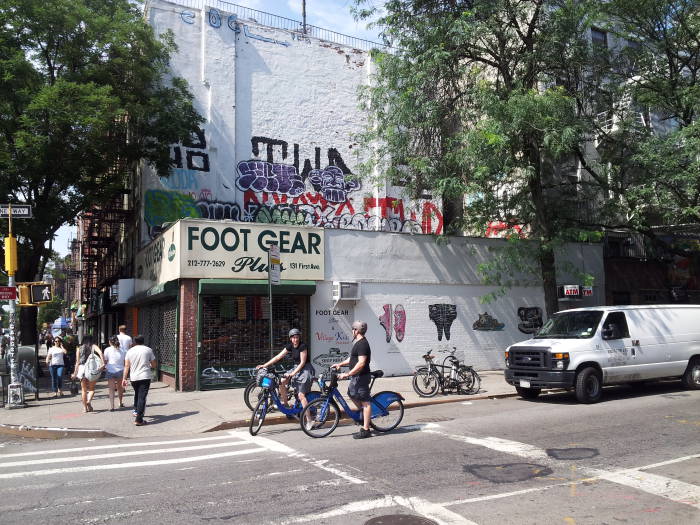
Here we look first to the south and then to the north along First Avenue. The north end of First Avenue is the Willis Avenue Bridge into The Bronx. Going south, its name changes to Allen Street at Houston, and then Pike Street from Division Street to its south end at South Street along the East River waterline.
First and Second Avenues are the longest continuously named and numbered Avenues in New York, stretching north from Houston to the Harlem River shoreline above 125 Street.
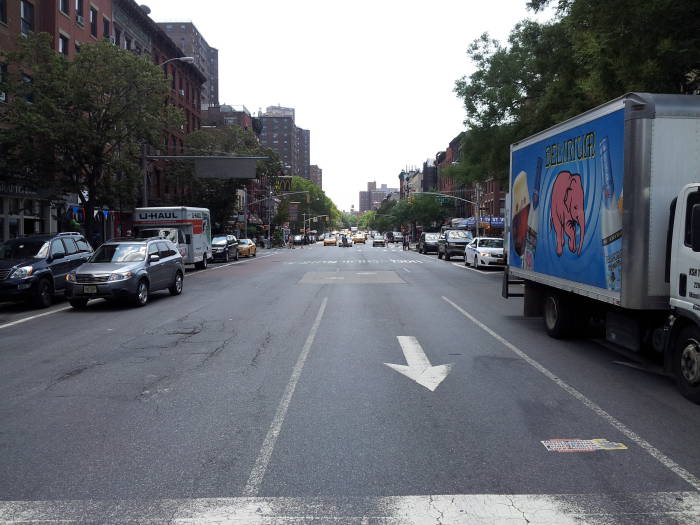
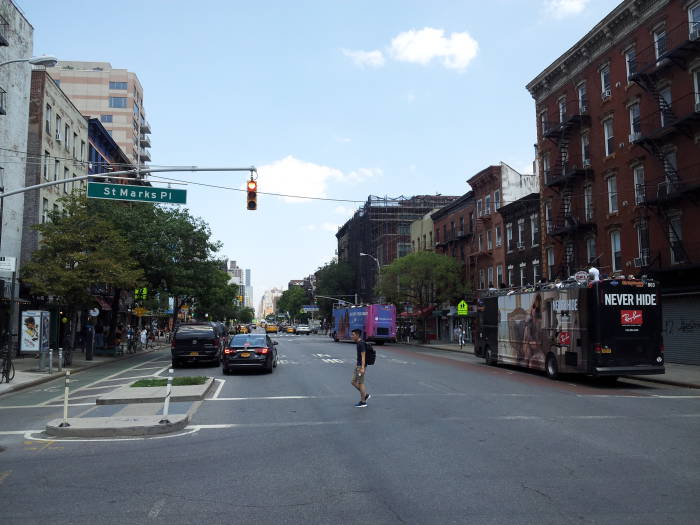
Back to International Travel
